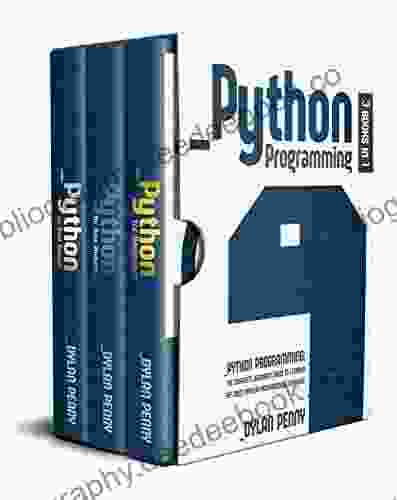Embodied Acting: What Neuroscience Tells Us About Performance

Embodied acting, a captivating approach to performance, places great emphasis on the integration of mind and body, recognizing the profound impact of physicality on emotional expression. This article takes an in-depth look at this captivating art form, drawing upon groundbreaking insights from neuroscience to elucidate the intricate relationship between our physicality and our emotions in artistic performance.
4.6 out of 5
| Language | : | English |
| File size | : | 2027 KB |
| Text-to-Speech | : | Enabled |
| Screen Reader | : | Supported |
| Enhanced typesetting | : | Enabled |
| Word Wise | : | Enabled |
| Print length | : | 257 pages |
The Body-Mind Connection
At the heart of embodied acting lies the fundamental understanding that our bodies and minds are inextricably intertwined. This perspective aligns with the findings of neuroscience, which reveals the existence of mirror neurons, specialized brain cells that activate both when we perform an action and when we observe others performing that same action. This remarkable neural mechanism provides a neurophysiological foundation for empathy and the ability to understand and share the emotional experiences of others.
Neuroscience and Embodied Acting
The field of neuroscience has made significant contributions to our understanding of embodied acting. For instance, research has shown that the act of embodying a character activates specific neural pathways associated with the emotions and experiences being portrayed. This correlation suggests that the physical actions and gestures employed in acting may not merely mimic emotions but can actually trigger genuine emotional responses within the performer.
Furthermore, neuroscience has shed light on the role of embodiment in memory and cognition. Studies have demonstrated that physical movement can enhance memory consolidation and recall, indicating that the physical and cognitive aspects of acting are closely intertwined. This knowledge has profound implications for actors, who can harness the power of embodiment to delve deeper into their characters and create more authentic and impactful performances.
Acting Techniques: Stanislavski to Grotowski
Embodied acting has manifested in diverse acting techniques throughout history. Konstantin Stanislavski, the renowned Russian actor and director, emphasized the importance of creating a truthful and emotionally connected performance by accessing inner feelings and experiences. His method, known as the Stanislavski System, encourages actors to inhabit their characters' physical and psychological worlds fully.
Building on Stanislavski's work, Polish theater director Jerzy Grotowski developed an approach that focused on the actor's physicality and the exploration of extreme states through rigorous physical training. Grotowski believed that by pushing the body to its limits, actors could unlock powerful emotional and transformative experiences.
Contemporary Approaches: FELDENKRAIS and Laban Movement Analysis
Contemporary embodied acting techniques continue to evolve, incorporating insights from disciplines such as somatic education and movement analysis. FELDENKRAIS, a method developed by Moshe Feldenkrais, emphasizes awareness of bodily sensations and movement patterns to enhance flexibility, coordination, and self-expression. Laban Movement Analysis, created by Rudolf Laban, provides a framework for analyzing and describing movement, enabling actors to refine their physicality and create expressive and nuanced performances.
The Impact of Embodied Acting
Embodied acting has a profound impact on the audience experience. By harnessing the power of the body-mind connection, actors can create performances that are both emotionally resonant and intellectually stimulating. Audiences are captivated by the authenticity and depth of performances that are grounded in embodied understanding.
Moreover, embodied acting empowers actors to explore the full range of human emotions and experiences, leading to greater self-awareness and personal growth. The physical and emotional demands of embodying different characters challenge actors to confront their own limitations and expand their artistic capabilities.
Embodied acting, informed by the insights of neuroscience and incorporating a variety of techniques, offers a powerful approach to performance. By embracing the mind-body connection, actors can create authentic and transformative experiences that resonate deeply with audiences. As neuroscience continues to unravel the complexities of the human brain and its relationship to physicality, embodied acting will undoubtedly continue to evolve and enrich the world of theater and performance art.
4.6 out of 5
| Language | : | English |
| File size | : | 2027 KB |
| Text-to-Speech | : | Enabled |
| Screen Reader | : | Supported |
| Enhanced typesetting | : | Enabled |
| Word Wise | : | Enabled |
| Print length | : | 257 pages |
Do you want to contribute by writing guest posts on this blog?
Please contact us and send us a resume of previous articles that you have written.
 Book
Book Novel
Novel Story
Story Genre
Genre Reader
Reader E-book
E-book Magazine
Magazine Paragraph
Paragraph Bookmark
Bookmark Bibliography
Bibliography Foreword
Foreword Synopsis
Synopsis Annotation
Annotation Footnote
Footnote Manuscript
Manuscript Scroll
Scroll Codex
Codex Bestseller
Bestseller Classics
Classics Biography
Biography Autobiography
Autobiography Memoir
Memoir Thesaurus
Thesaurus Resolution
Resolution Librarian
Librarian Catalog
Catalog Card Catalog
Card Catalog Borrowing
Borrowing Periodicals
Periodicals Study
Study Scholarly
Scholarly Lending
Lending Academic
Academic Journals
Journals Reading Room
Reading Room Special Collections
Special Collections Study Group
Study Group Thesis
Thesis Dissertation
Dissertation Awards
Awards Elizabeth Robins Pennell
Elizabeth Robins Pennell Lilly Jones
Lilly Jones Javier Cercas
Javier Cercas Angelica Malin
Angelica Malin Diego Eis
Diego Eis David Chandler
David Chandler Kate Berry
Kate Berry Angela Thirkell
Angela Thirkell Eileen S Prince
Eileen S Prince Robert Snedden
Robert Snedden John Dodson
John Dodson Dan Roodt
Dan Roodt Joan L Coffey
Joan L Coffey Melvin A Taylor
Melvin A Taylor Ty Crandall
Ty Crandall Zachary David Levy
Zachary David Levy Edward Champlin
Edward Champlin Scarlett Se Leva
Scarlett Se Leva Myron Golden
Myron Golden Katharine Orton
Katharine Orton
Light bulbAdvertise smarter! Our strategic ad space ensures maximum exposure. Reserve your spot today!

 Jace MitchellThe Complete Beginner Guide to Mastering Programming with the Most Popular...
Jace MitchellThe Complete Beginner Guide to Mastering Programming with the Most Popular...
 David PetersonHitting The Sweet Spot: How Consumer Insights Can Inspire Better Marketing...
David PetersonHitting The Sweet Spot: How Consumer Insights Can Inspire Better Marketing... Mike HayesFollow ·18.7k
Mike HayesFollow ·18.7k Clark BellFollow ·16.1k
Clark BellFollow ·16.1k Robert FrostFollow ·6.3k
Robert FrostFollow ·6.3k Jimmy ButlerFollow ·14.2k
Jimmy ButlerFollow ·14.2k Neil ParkerFollow ·18.7k
Neil ParkerFollow ·18.7k Desmond FosterFollow ·18.1k
Desmond FosterFollow ·18.1k Henry Wadsworth LongfellowFollow ·16.3k
Henry Wadsworth LongfellowFollow ·16.3k Tony CarterFollow ·16.9k
Tony CarterFollow ·16.9k

 Braden Ward
Braden WardFeminism's Forgotten Fight: The Ongoing Battle for...
The feminist movement has historically...

 Julio Cortázar
Julio CortázarBlue Heaven Black Night: A Literary Journey Through Love,...
In the realm of...

 Eddie Bell
Eddie BellA Journey Through Time: Exploring the Enchanting World of...
The vibrant tapestry of New...

 Lawrence Bell
Lawrence BellValiance Dragon Soul Press Anthology: A Literary Odyssey...
Step into a realm where...

 Aron Cox
Aron CoxEmbark on a Creative Odyssey with Jean Leinhauser's "101...
Unveil a Kaleidoscope of...
4.6 out of 5
| Language | : | English |
| File size | : | 2027 KB |
| Text-to-Speech | : | Enabled |
| Screen Reader | : | Supported |
| Enhanced typesetting | : | Enabled |
| Word Wise | : | Enabled |
| Print length | : | 257 pages |










